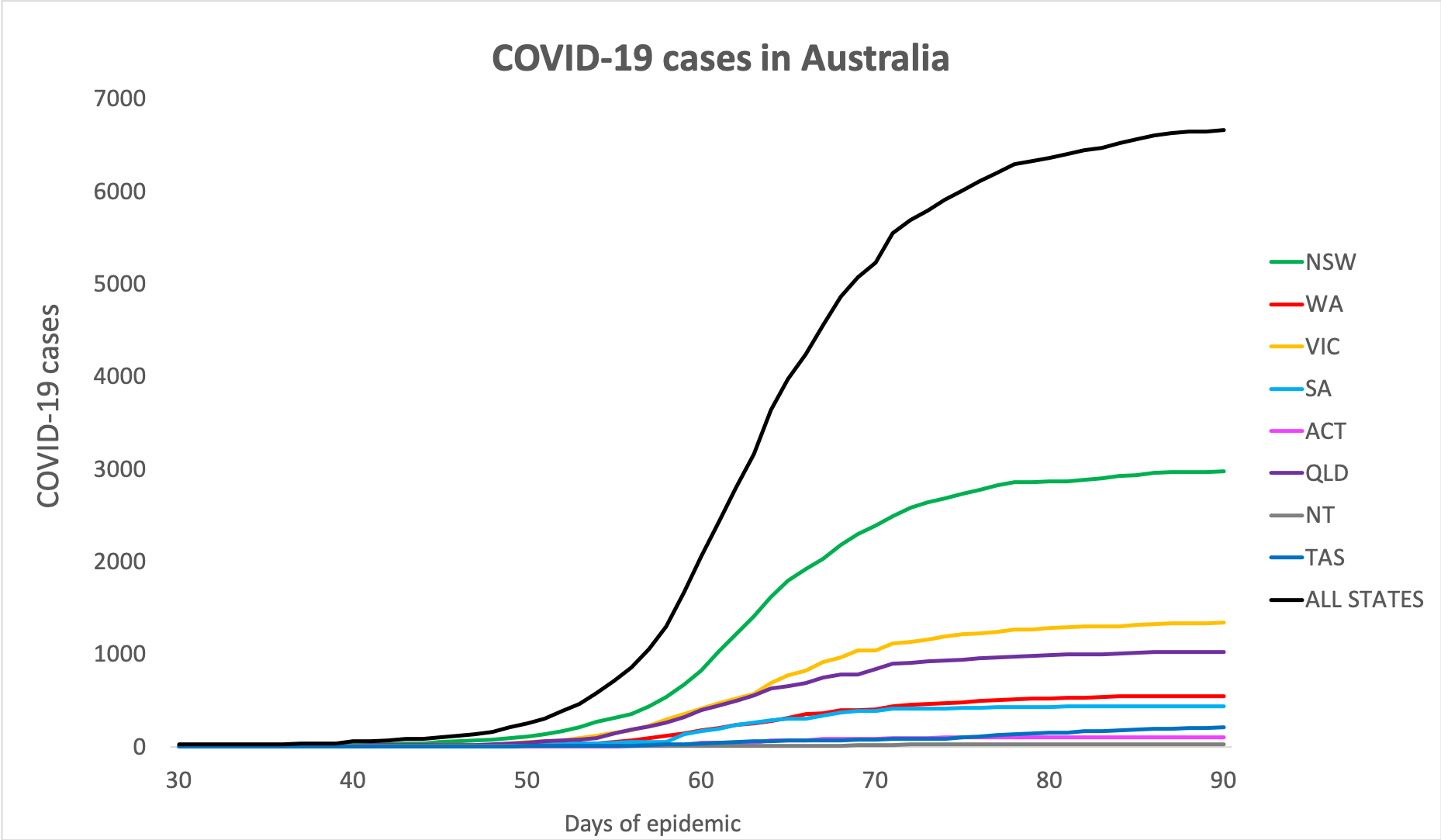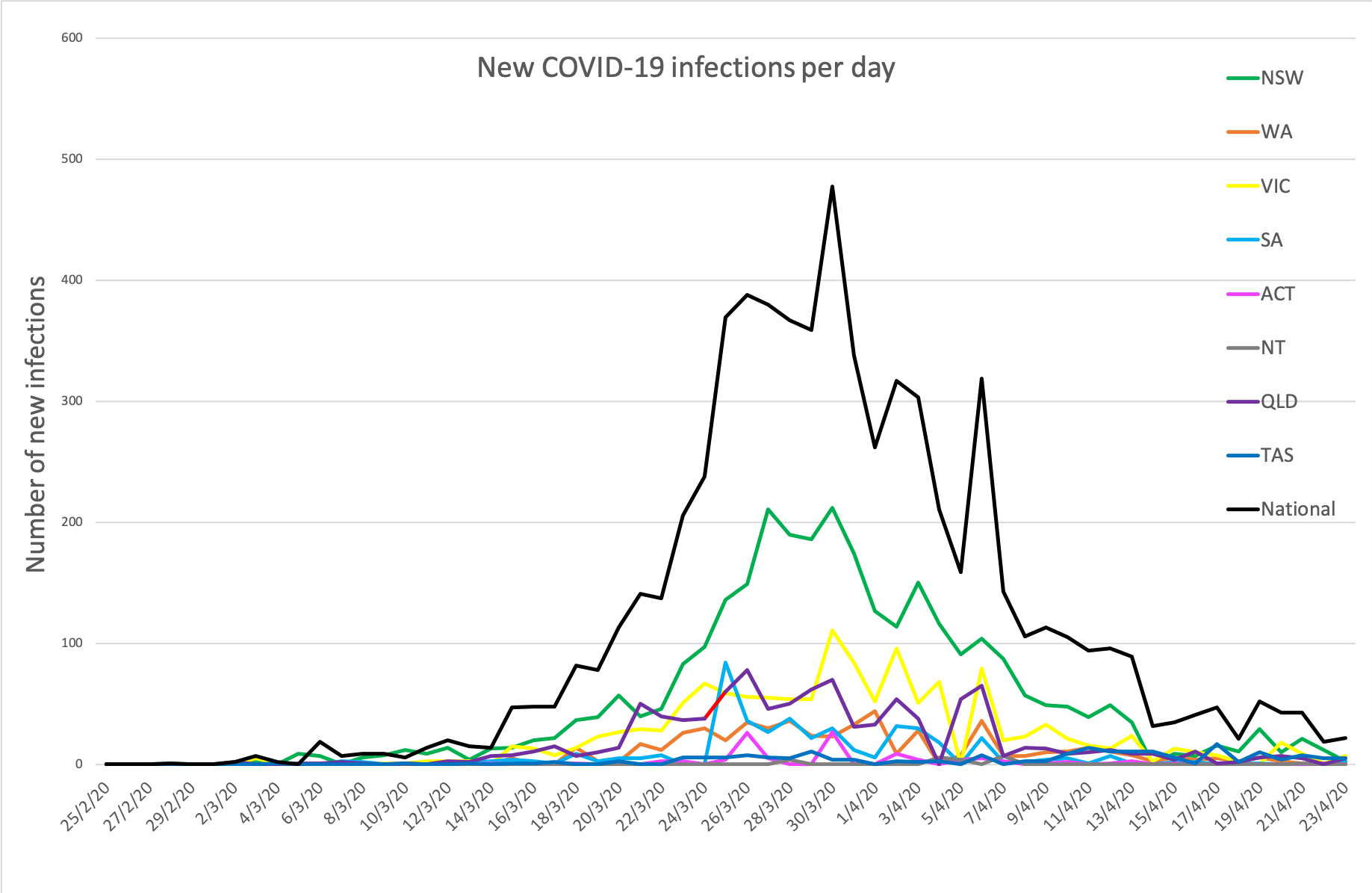Half of healthcare workers in an Australian survey say they lack the personal protective equipment needed to do their jobs safely, and it’s causing many to reconsider their willingness to work on the frontline of the pandemic.
Thanks for joining us this week on The Medical Republic‘s COVID-19 live blog.
And a big thank you to our sponsor and supporter for funding this project with an independent grant, Boehringer Ingelheim.
The latest
- Pete Evans falls foul of the TGA with ‘unfounded’ claims about a device for COVID-19.
- Survey suggests many healthcare workers reconsidering willingness to work because of lack of PPE.
- NSW expands COVID-19 testing criteria to all symptoms of acute respiratory illness.
4.20pm, 24 April
- Walking advertisement for teeth whitener, occasional celebrity chef and notorious touter of dubious wellness solutions, Pete Evans has fallen foul of the Therapeutic Goods Administration for promoting a device he claimed could be used in relation to the ‘Wuhan coronavirus’.
The TGA slapped him with two infringement notices and fines totalling $25,200 after they received a number of complaints (well done, whoever you are) about a Facebook live stream earlier in April.
Clearly the TGA is immune to Pete’s Ken-bot smile and mediocre star-wattage, because they took his unfounded health claims “very seriously”.
Going to have to sell some extra activated almonds to pay for that little slip-up.
- Half of healthcare workers in an Australian survey say they lack the personal protective equipment needed to do their jobs safely, and it’s causing many to reconsider their willingness to work on the frontline of the pandemic.
Edith Cowan University researchers released early data from an ongoing survey of over 350 doctors, nurses and paramedics which found nearly 70% of those who have responded so far say they’ve been asked to ration their use of PPE. Four out of five were concerned about exposing family members to the virus and nearly one third had chosen to physically isolate themselves from family members to avoid putting them at risk.
“Along with feeling unsafe, healthcare workers are also worried that their workplace has insufficient PPE to protect staff, especially if there were to be a surge in patients,” said Associate Professor Erin Smith, from the School of Medical and Health Sciences at Edith Cowan University in a statement.
Nearly 80% of respondents said they were weighing up their professional obligations against personal risk, and 60% said they were less willing to work now than usual.
One in five had been tested for COVID-19, and 17% had self-isolated because of work exposure to the disease.
The study is ongoing, and the survey can be found here.
1.41pm, 24 April
One of the questions on everybody’s minds right now is… what will general practice look like after the COVID-19 pandemic? TMR reporter Felicity Nelson is joined by Dr Edwin Kruys, a Queensland GP, who wrote a blog on this topic.
- New South Wales is ramping up its testing for COVID-19 by expanding the testing criteria to include all individuals – particularly healthcare, aged care or other high-risk workers – with symptoms of acute respiratory illness including fever, cough, tiredness (I mean, who isn’t tired right now?) or sore throat.
The move comes as the state doubles its laboratory testing capacity from 4000 tests per day to 8000 per day.
Even people with mild symptoms are being encouraged to come forward for testing to help identify as many COVID-19 cases in the community as possible.
- Still got questions about telehealth? The Australian Health Practitioner Regulation Agency has a Q&A on telehealth that answers questions such as what is telehealth, who can use it, how does the code of conduct apply in a telehealth situation, what technology can be used, and how to deliver safe, effective health services via telehealth.
“This is an unprecedented situation and we know you are working hard to keep people safe in a demanding and fast-changing environment,” AHPRA says on the webpage.
On the question of what technologies can be used, the advice is that telehealth can be conducted by telephone and video-calling apps and software such as Skype, Facetime, Duo and GoToMeeting.
There’s detailed information on the best way to conduct a telehealth consultation, including maintaining clear and accurate health record of the consultation, ensuring continuity of care by making arrangements to follow-up on patient progress, and being mindful of confidentiality if you are conducting the telehealth consultation from home.
11.33am, 24 April
Here are some interesting statistics on COVID-19-related hospitalisations and deaths in Australia:
- Donald Trump has suggested injecting disinfectant to cure COVID-19.
Yep, you read that correctly. You might want to read it again, just to make sure, and to recalibrate your metrics of the epic stupidity of the man elected to lead the United States.
For your amusement/horror, here is the transcript and the video, just to prove that these words actually came out of his mouth.
“I see the disinfectant where it knocks it out in a minute – one minute, and is there a way we can do something like that by injection inside or almost a cleaning? Because you see it gets in the lungs and it does a tremendous number in the lungs. It would be interesting to check that, you’re going to have to use medical doctors with that, but it sounds interesting to me.”
All we have to say is, “you first, Donald”.
Department of Homeland Security official Bill Bryan said his department was not investigating the injection of disinfectants as a treatment.
Trump asks if he can inject people with disinfectant to get rid of coronavirus. pic.twitter.com/UQEiNwPYrh
— Sarah Reese Jones (@PoliticusSarah) April 23, 2020
- Yesterday we reported on a study from New York involving 5700 patients with COVID-19, published in JAMA, which suggested a mortality rate of 88% among individuals who were put on ventilators.
It has since been pointed out by an US trauma surgeon on Twitter, that this figure is misleading because the study only reported the outcomes of people who were either dead or discharged alive at the end of the study period. That meant it excluded people who were still on a ventilator at the median follow-up time of 4.5 days, which was 831 of the 1151 ventilated patients.
He argued that the mortality figures should instead have been represented as; of those 1151 ventilated patients, 3% were discharged, 25% died, and 72% were still hospitalised.
Mea culpa. Sorry we missed this.
THREAD: Lots of alarm over the ?88% Mortality?among #Covid19 patients on ventilators. The paper *should* say “Among pts on vents, mortality will range from 25-97%”. This @JAMA_current study is a great for a JournalClub on “Beware Your Denominator”?(1/7)https://t.co/Xsxmi3zIL9 https://t.co/SfSrBUzUWf
— John W Scott, MD MPH (@DrJohnScott) April 23, 2020
- It’s not been a good week for COVID-19 drug candidates. According to a report in the Guardian, data from a randomised, placebo-controlled trial of Gilead’s antiviral remdesivir – the results of which were accidently posted on the WHO’s clinical trials database but later removed – suggested it didn’t work and the trial was halted early because of side effects.
The trial involved 158 patients in China with severe COVID-19, and according to the Guardian report, 14% of patients treated with remdesivir died compared with 13% of those on placebo.
Now the European Medicines Agency has issued a reminder of the serious and potentially fatal side effects of chloroquine and hydroxychloroquine. The public health warning emphasised their potential effects on heart rhythm – particularly when used in combination with azithromycin – liver and kidney, and their association with hypoglycaemia and nerve damage.
The EMA said these medicines were being investigated in clinical trials, but the clinical data was still limited, and the studies had not demonstrated any beneficial effects. - Here are Australia’s confirmed COVID-19 infection rates, to 3pm yesterday. In an encouraging development, health authorities are also now reporting the number of people listed as recovered.
National – 6,661 (up 12) with 75 deaths and 5,045 reported as recovered
ACT – 104
NSW – 2976
NT – 27
QLD – 1026
SA – 438
TAS – 207
VIC – 1337
WA – 546


Disclaimer: The content on the Medical Republic COVID-19 blog is independently created by Medical Republic without input from Boehringer Ingelheim Pty Ltd. The views, information, or opinions expressed on the Medical Republic COVID-19 blog are Medical Republic’s own and do not necessarily represent those of Boehringer Ingelheim Pty Ltd. Boehringer Ingelheim Pty Ltd is not responsible for and does not verify the accuracy of any content on the Medical Republic COVID-19 blog.


